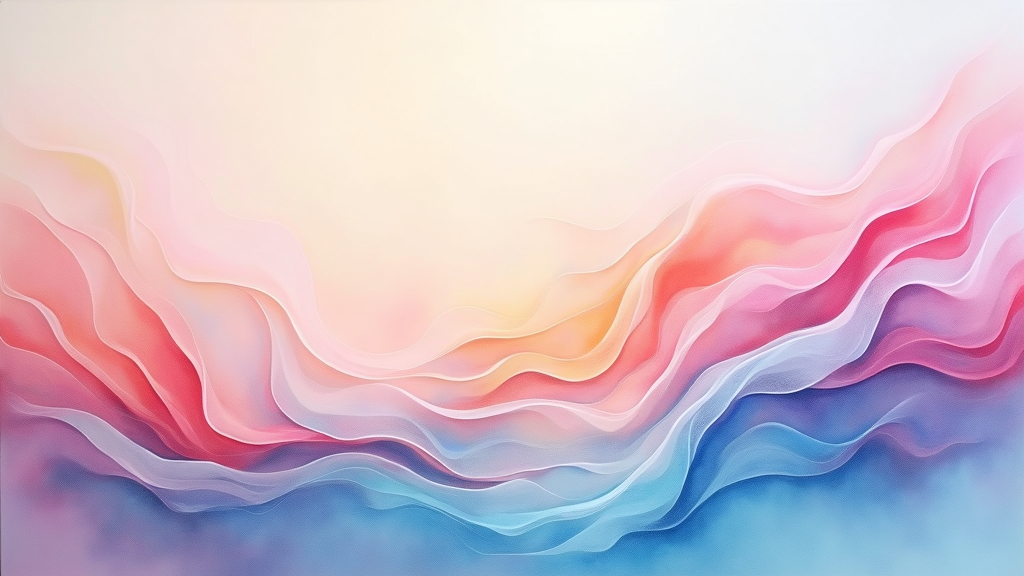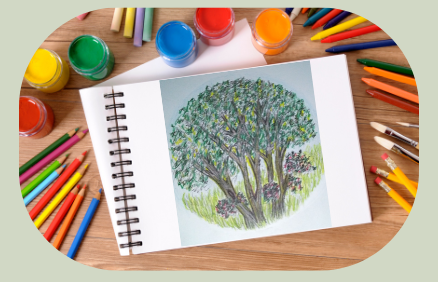Art has always been a personal escape, a soothing way to handle stress and invite creativity into daily life. Engaging in art boosts my mood and gives me a powerful method to practice self-care. In this article, I want to share how art can be a gentle yet effective form of self-care. It doesn’t require expert skills; you need a willingness to express yourself and experiment with innovative ideas.

Essential Elements for Promoting Self-Care Through Art
Using art as a self-care tool is about more than creating eye-catching visuals. It’s a pathway to reconnect with yourself, foster relaxation, and express emotions nonverbally. Your art’s self-care core is built on creativity, authenticity, and a playful spirit. A natural curiosity combined with spontaneity turns art into a therapeutic activity.
Understanding the essential elements of art therapy has allowed me to form a nourishing and freeing routine. With every brushstroke or pencil mark, I can release built-up tension and feelings that are hard to express in words. This creative outlet is essential as it provides a gentle step toward emotional healing and relaxation.
Historically, art has served as a medium for communication when words fall short. In my experience, it opens a doorway to honest self-reflection. The process isn’t about perfection but about immersing yourself in colors, textures, and forms that speak to your inner world.
Getting Started with Art for Self-Care
Before beginning to do art self-care, I found it helpful to understand the key materials and techniques that support this practice. Even if you are entirely new to art, plenty of simple methods and affordable supplies can help you get started.
For those starting on this adventure, it helps to set aside a quiet space where you can focus on the creative process without interruptions. Starting simple can pave the way for a deeper exploration. Here are a few basic ideas to incorporate into your self-care routine:
- Experimentation: Allow yourself to play with a different media without pressuring yourself to create a masterpiece.
- Mindfulness: Focusing on the process rather than the outcome helps keep your artistic juices stress-free.
- Authenticity: Creating art that genuinely resonates with you encourages genuine self-expression.
Step-by-Step Guide to Your Self-Care Art Adventure
Establishing an art practice for your self-care may initially seem daunting. But breaking it down into small, manageable steps can help build a sustainable habit. Here’s the roadmap I follow to make the process both enjoyable and effective:
- Choose Your Medium: Begin with a medium that feels natural to you, such as watercolors, acrylics, coloring book with colored pencils, pencil sketches, doodling with a pen, or even collages. The goal is to allow self-expression comfortably.
- Create a Dedicated Space: Set up a small area where you can experiment freely without worrying about making a mess. A unique spot signals to your mind that it’s time to relax and be creative.
- Set a Regular Time: Establishing a routine—even if it’s just 20 minutes a day—reinforces the habit and helps make art a consistent part of self-care.
- Focus on the Process: Pay attention to sensory details—listen to soft music, feel your materials’ texture, and get absorbed in the creative flow.
- Reflect on Your Work: After each phase, take a moment to appreciate what you have created. Make a mental note of how your mind and body feel afterward. Do you feel any emotions that may come to the surface from what you have accomplished? Go with it and feel it! Be proud of what you have just done!
This approach has allowed me to build a regular art practice and a kinder dialogue with myself. Every moment I spend doing art offers me a time to escape and express my inner thoughts.
Things to Consider Before Deepening Your Art Self-Care Practice
Like any new habit, incorporating art into your self-care routine has challenges. I have encountered moments of uncertainty, such as choosing the right supplies or finding the motivation to begin. Here are a few factors to think about before you jump more profoundly into your practice:
- Time Commitment: Planning a schedule for creative time helps balance art with other responsibilities.
- Art Supplies: Investing in basic yet reliable supplies can positively impact your experience. It doesn’t have to be costly, but using dependable materials makes the creative process smoother.
- Environmental Factors: Working in a comfortable, quiet space boosts focus and creates a more immersive creative experience.
- Emotional Readiness: Sometimes, art can bring hidden emotions to the surface. It’s essential to be mentally prepared for the introspection that may arise during your quiet time.
Time Commitment
Balancing creative phases with everyday responsibilities can be challenging. I’ve found that even short, consistent times can be enriching. Planning and keeping a flexible schedule can help maintain a relaxing activity in doing art rather than thinking of it as a chore and not an enjoyable activity.
Art Supplies
Beginning with basic supplies is perfectly fine. I started with a simple sketchbook and a set of pencils and gradually added more tools as my interest grew. The right supplies can boost your creativity and make the process extremely enjoyable.
Environmental Factors
A quiet and relaxing space can make all the difference. I make sure that my creative area has good lighting, minimal distractions, soothing and soft music, and a few personal touches that help create a calming and peaceful atmosphere. This setting has allowed me to immerse myself in art without any interruptions.
Emotional Readiness
Art can be a personal and intimate adventure, so it is essential to be open to whatever emotions arise. Feeling vulnerable during your creative process is perfectly acceptable. This openness can often lead to deeper insights and personal growth.
Remember, these considerations are not obstacles but guidelines to help you build a fulfilling art practice.
Advanced Tips and Tricks for Using Art as Self-Care
After establishing a consistent art practice, I started exploring some advanced techniques that turned up the self-care benefits of art. These tips have helped my creative routine become a more dynamic and immersive experience.
Jump into Deeper Abstraction: Experimenting with abstract forms and non-literal expressions can open new paths to self-insight. Abstract art lets me break free from traditional constraints and focus on the emotions behind each mark. This approach effectively expresses complex feelings without thinking about realistic outcomes.
Mixing Different Mediums: Combining elements like ink, watercolor, and collage has opened fresh avenues for creativity. This layering adds texture and symbolizes the many layers of emotion and experience that shape self-care. Using mixed media often results in a more prosperous, multi-dimensional perspective of your inner world.
Incorporate Mindful Techniques: I sometimes pair my art time with mindfulness practices such as deep breathing or soft background music. These techniques help quiet the mind, intensify the meditative quality of creating art, and reduce stress while maintaining my focus on the creative process.
These advanced approaches can elevate your art self-care practice. They encourage experimentation and reinforce your perception that art is an ever-evolving personal adventure toward tranquility.
The Basics: What Art Materials Should Beginners Focus On?
When you begin, I encourage you to focus on a few fundamental tools that boost creativity and self-expression. The basics of art for self-care are all about accessibility and ease.
I began with materials that allowed me to experiment until I found my unique style and voice. Think of it as laying the foundation for your creative self-discovery.
- Sketchbooks and Journals are essential for doodling, jotting ideas, and planning creative projects. They provide a safe space to express thoughts without pressure.
- Essential Drawing Tools: Whether it’s pencils, charcoal, colored pencils, or ink pens, having a reliable set of drawing tools can spark spontaneous creativity.
- Watercolors and Acrylics: Playing with color can quickly change your mood. These paintings let you explore both subtle blends and bold expressions.
- Mixed Media Supplies: Items like colored paper, glue, and recycled magazines encourage creative recycling with minimal planning.
Exploring these basic supplies can help you pinpoint which materials resonate with your style. I encourage you to start small and gradually expand your toolkit as your confidence grows.
Frequently Asked Questions
Below are a few questions I often get when discussing art as a form of self-care. These queries clear up common doubts and share insights from my own experiences.
Question: How do I begin incorporating art into my self-care routine?
Answer: I started with short, regular sessions using basic supplies like sketchbooks, pencils, pens, a coloring book, and colored pencils. The key is to focus on the process rather than the final product and allow yourself to be natural and spontaneous.
Question: What if my artwork is not good enough and is ugly?
Answer: Never be discouraged about your artwork. Even the best of us can question our artwork. Art is not about perfection. It is about seeing your growth from where you began to this moment. Art is about uniquely expressing your feelings. Even if you feel uncreative, doing something positive can affect your well-being. Always keep your artwork. Please do not throw it out because you may have a different view after seeing your art piece again after a few days or months.
Question: Can engaging in art manage stress?
Answer: Yes, it does. After caring for my dad full-time for eleven years, I found art an effective outlet for stress. It offers a break from daily worries and provides a hands-on method for working through emotions safely and constructively. It also softens your mind and takes you to a place of peacefulness.
Conclusion
Using art as a tool for self-care allows me to connect deeply with my emotions and find balance in life. Creating can provide relief and clarity, whether painting, drawing, coloring, or experimenting with mixed media. Each peaceful moment with art is an opportunity to prioritize mental and emotional well-being.
Embracing art for self-care is a personal adventure that grows with time and practice. I encourage you to explore different techniques, invest in a few basic materials, and, most importantly, enjoy the creative process. Over time, you might find that art improves mood and changes how you handle everyday challenges.
Your adventure into using art as self-care may begin slowly, but every stroke and mark you make carries value. Keep experimenting, be open to new methods, and let your creative spirit guide you to a more balanced, mindful life.

